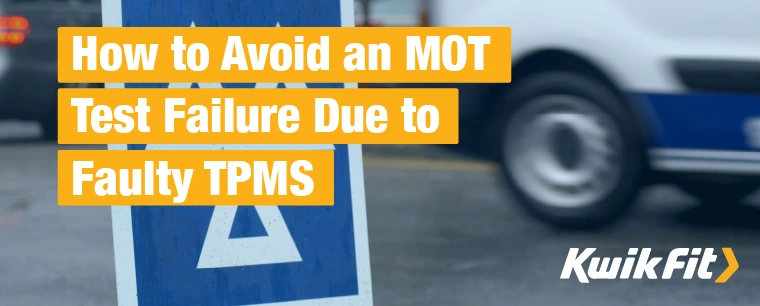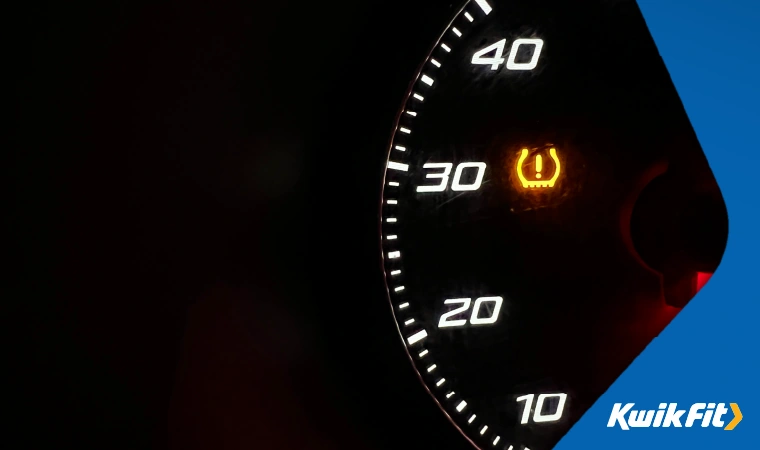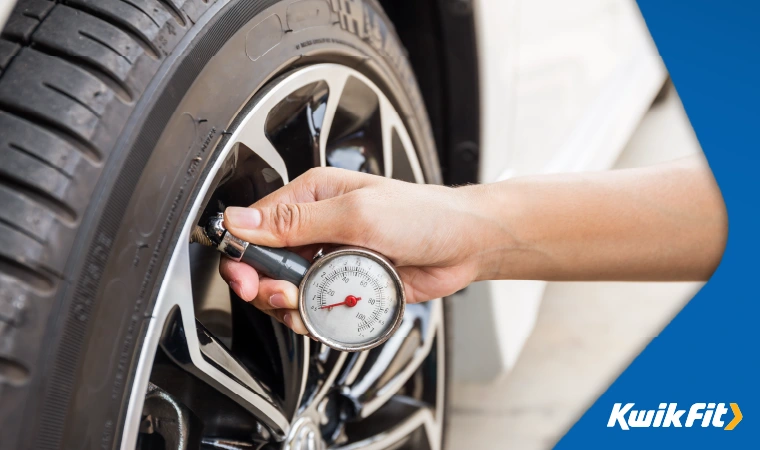How To Avoid An MOT Test Failure Due To Faulty TPMS
Jack Dreyer | Wednesday 15th November 2023 1:00pm

TPMS, otherwise known as a Tyre Pressure Monitoring System, is undoubtedly one of the biggest innovations in tyre safety in recent years.
The technology itself has actually been around for several decades now — with the Porsche 959 being the first passenger car to adopt TPMS in 1986. However, it’s only in the last few years that car manufacturers have included TPMS features in a growing number of models. In fact, it was only since 2014 that all new cars manufactured in Europe had to be fitted with TPMS as standard.
Despite their usefulness, TPMS sensors have caused drivers a major headache, particularly when the time comes for their annual MOT check.
Read on to find out how.
When were TPMS checks added to the MOT test?
TPMS checks were added to the MOT test checklist in January 2015. Since then, you can receive an instant MOT fail if the TPMS dashboard light stays on to indicate a fault or problem with the TPMS valves.
Many motorists don’t realise this, which has led to thousands of new MOT failures that could have been easily avoided.
The tyre safety charity, TyreSafe, estimates that as many as 20,000 MOT tests have been failed so far due to a faulty TPMS warning light being displayed on the dashboard. The charity is holding drivers accountable for failing to carry out regular, simple checks to ensure their tyres are roadworthy, and their TPMS is fully functioning.

What are the common problems with TPMS?
Battery failure
One of the most common TPMS sensor issues is battery failure. Each TPMS sensor is fitted with an internal battery which is designed to last 100,000 miles. The more miles you travel, the faster the battery will deplete – but a sensor battery should last 5 to 7 years. In most sensor variants, the battery is sealed into the sensor casing and cannot be replaced, so a replacement sensor should be fitted.
Valve stem problems
Another problem is that while the sensor itself is seated safely inside the tyre, the valve stem is a bit of a weak link. The stem protrudes from the tyre and rim, so is open to the elements and has to deal with everything the road can throw at it. Salt used to grit roads is particularly damaging, and the metal sensor stems can become corroded over time – eventually becoming brittle. If the valve stem is damaged, the whole sensor will need to be replaced.
Other checks before your MOT test
There are a number of other areas of the car that could be looked at beforehand to make your MOT check go smoothly. To make sure you're properly prepared, why not check out our pre-MOT checklist?

What is the law surrounding TPMS?
On the 1st of January 2015, legislation was brought into effect which stated that a car displaying a TPMS fault, shown via a warning light on the dashboard, would result in an automatic MOT check failure. This legislation was a positive step towards ensuring correct tyre pressure, and saw improvements in road safety as a result of greater tyre pressure awareness.
At the time that this legislation passed, any car registered after 1st January 2012 fitted with TPMS would fail its MOT check if the TPMS fault warning light was displayed. However, MOT tests changed on the 20th of May 2018, at which point the government included different defect categories. Any defects found during an MOT service would fall under one of the following three categories – dangerous, major, and minor.
When this was announced, if the car displayed a TPMS fault warning light on the dashboard, this would be marked as a minor defect. Defects that fell under this category would be considered to have no significant effect on the safety of the car or impact on the environment. Repair would be recommended as soon as possible, but it would not lead to an MOT failure.
Then, in June 2019, following the release of the government’s MOT inspection manual, TPMS malfunction changed defect category to a major. A major defect is something that impacts the vehicle’s safety, puts other road users at risk, or has an impact on the environment. This meant that the Tyre Pressure Monitoring System legislation had come full circle, and it once again can result in an MOT failure.
How can you avoid a TPMS-related MOT failure?
While TPMS sensors are designed to last for many years, it may be necessary to have your TPMS serviced occasionally to ensure it continues to work correctly – and to avoid an unnecessary MOT failure.
When it comes to your car’s MOT check and how your TPMS can impact the results, the simplest way to avoid a TPMS-related MOT failure is to keep an eye on your tyre pressures and manually check your tyre condition every month.
If your tyre pressure drops by 6-7 PSI, your TPMS warning light will illuminate. Maintaining the correct tyre pressure will prevent this from happening.
Replacing your TPMS sensor at Kwik Fit
At Kwik Fit, we believe in preventative maintenance, which is why we recommend that your TPMS sensors should be serviced every time a tyre bead is broken.
Should you require a new TPMS sensor, we can supply a cost-effective replacement sensor which clones your existing settings for a fraction of the price of a dealership replacement.
To find out more, contact your local Kwik Fit centre and ask about TPMS servicing. We also offer a free tyre check at all of our centres if you have concerns about the condition of your tyres.
Other checks before your MOT test
There are a number of other areas of the car that could be looked at beforehand to make your MOT go smoothly. To make sure you're properly prepared, take a look at our pre-MOT checklist.
If you have questions about your vehicle’s TPMS or you require a new TPMS sensor, pop into your local Kwik Fit centre and we’ll be happy to help.
Any facts, figures and prices shown in our blog articles are correct at time of publication.
Featured Articles
Is it Illegal to Drive With One Headlight?
Saturday 19th July 2025
Wondering if it’s illegal to drive with one headlight? Learn about the safety risks and penalties of illegal blown bulbs and why you should fix them promptly.
Air Con in EVs & Hybrids: Experts Answer Your Questions
Monday 30th June 2025
Does air con drain EV batteries? Can you use the air con while charging an electric car? Find out the answers to these questions & more from Kwik Fit’s experts.
Why Is Your Car Making a Noise? Fixes & Tips
Friday 13th June 2025
When your car starts making unexpected noises, it can certainly be quite disconcerting; it may be nothing to worry about, but here’s what you need to know.









